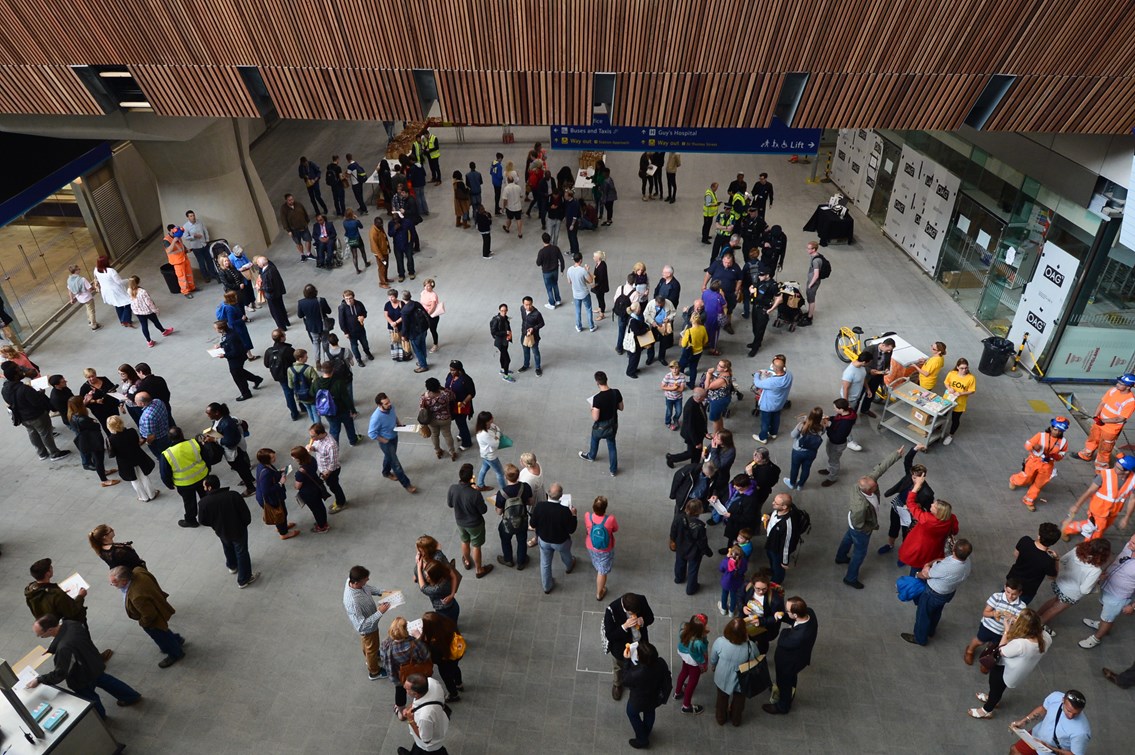Thursday 25 Aug 2016
Mark Carne comment: London Bridge station redevelopment
- Region & Route:
- National
The railway network in the south of England is one of the most congested anywhere in Europe – as passengers know only too well as they stand on crowded commuter trains. In the last 20 years the number of people travelling on the rail network has doubled, and the rail network, our stations and our platforms are dealing with more passengers than they were ever designed for.
But, after decades of under investment, we are now spending record amounts in improving and upgrading the railway. Our ‘Railway Upgrade Plan’ represents the biggest investment programme in the railways since Victorian times. These huge projects take many years to plan and build and during this time the passengers often don't see the benefits – instead they see walls of wooden hoardings protecting construction sites, overcrowding on trains and platforms, delays and disruption.
A major part of the railway upgrade is the Thameslink Programme which, when complete in 2018, will transform north-south travel through London. Before work started, London Bridge station was so congested that Thameslink trains simply weren't able to call there during the morning and evening peaks, with trains instead diverted via Elephant and Castle.
The construction work to totally transform London Bridge station and improve the reliability of the approaching railway has been going on for four years. It is the most ambitious redevelopment of any London station in a generation and one of the most technically demanding projects ever undertaken on our railway. We are rebuilding Britain’s fourth busiest station – the tracks, the platforms and the infrastructure which enables trains to run – all the while keeping the station open and doing our best to keep passengers moving. I am extremely sorry that while doing this work there have been times when passengers have suffered frustrating delays. I know that the promises about tomorrow are of little consolation when performance isn’t good enough today.
I am pleased that, finally, some of the benefits of this project will be much more visible from next week. From this Monday we are opening two thirds of a brand new concourse, that will be the size of the pitch at Wembley once finished, making it much better for the 56 million passengers who use the station every year.
The station will blend twenty-first century engineering with Victorian heritage and architecture. It will be as transformative as King’s Cross and will become an iconic new station for London. Our team has worked enormously hard to make this possible – every night, every weekend, every bank holiday for years. They are proud of what they have built and I think they should be.
But more needs to be done to make journeys better for passengers; and the work doesn’t stop now. Over the next 18 months, the Thameslink Programme will continue to untangle the complex track layout approaching the station and, as a result, deliver more reliable, more frequent journeys through central London by the end of 2018.
The changes we are making will allow more and longer Thameslink trains to run every day – up to 24 trains an hour through the heart of the capital, with eight or 12 carriages, compared to just eight trains an hour before the work began. Further new trains will be introduced into passenger service over the next two years to deliver an 80% increase in the number of seats for passengers travelling across central London.
The changes being made will offer passengers better connections than ever before to and through London, Gatwick and Luton airports and beyond, from Brighton to Peterborough and Cambridge.
In addition, the line connects with London’s newest transport hub at Farringdon – where Crossrail and Thameslink will eventually meet – offering improved and faster connections to Heathrow, Canary Wharf and the West End.
This is important for passengers and the economy. Britain’s railway is central to making the country run, underpinning jobs, driving economic growth and delivering cleaner and safer travel. More than four million journeys a day are taken by people to work, study or visit friends and family – the majority of these journeys going through, to or from the capital.
I am pleased we can begin to show you these improvements. This is by no means the end of the work to upgrade the railway; much more must be done. It is, however, a big step towards the bigger, better railway passengers deserve.
Mark Carne is chief executive of Network Rail which owns and operates Britain’s railway infrastructure – the tracks, signals and busiest stations in the country.
An abridged version was first published in the Evening Standard on 25 August 2016.
Contact information
Passengers / community members
Network Rail national helpline
03457 11 41 41
Latest travel advice
Please visit National Rail Enquiries
Journalists
Network Rail press office -Ross Easton
Chief press officer
Network Rail
0203 356 8700
07920 190 994
Ross.Easton@networkrail.co.uk
About Network Rail
We own, operate and develop Britain's railway infrastructure; that's 20,000 miles of track, 30,000 bridges, tunnels and viaducts and the thousands of signals, level crossings and stations. We run 20 of the UK's largest stations while all the others, over 2,500, are run by the country's train operating companies.
Usually, there are almost five million journeys made in the UK and over 600 freight trains run on the network. People depend on Britain's railway for their daily commute, to visit friends and loved ones and to get them home safe every day. Our role is to deliver a safe and reliable railway, so we carefully manage and deliver thousands of projects every year that form part of the multi-billion pound Railway Upgrade Plan, to grow and expand the nation's railway network to respond to the tremendous growth and demand the railway has experienced - a doubling of passenger journeys over the past 20 years.
Follow us on Twitter: @networkrail
Visit our online newsroom: www.networkrailmediacentre.co.uk

